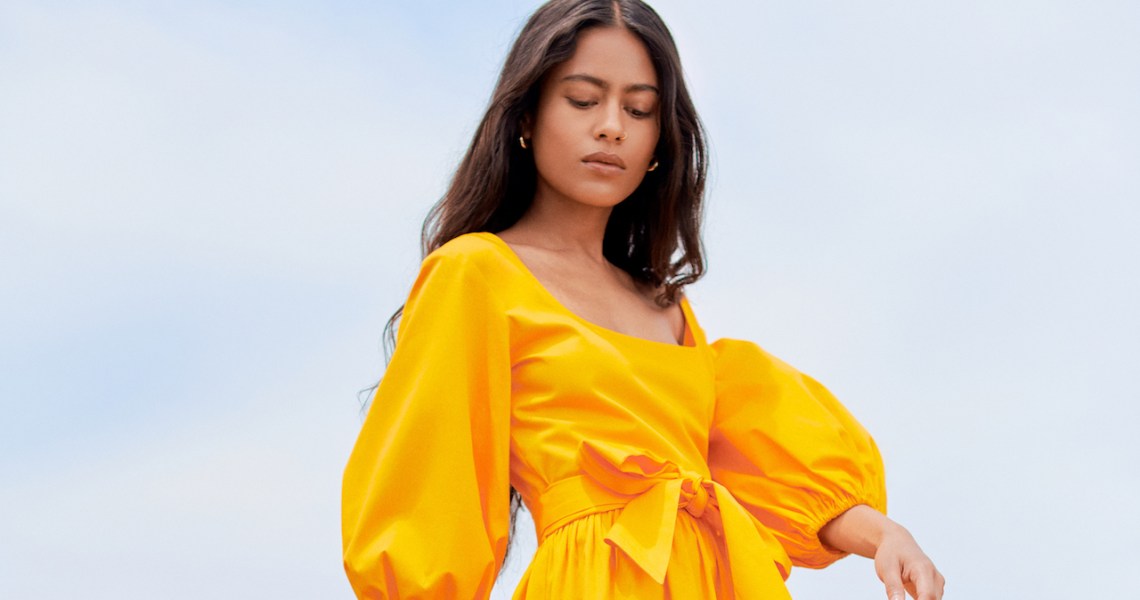Brands are increasingly expanding into new categories to diversify revenue streams. Loeffler Randall is the latest brand to expand beyond its central focus, with a new ready-to-wear capsule collection.
“I didn’t go in with a goal of huge growth. In fact, the opposite: I went in with the hope of creating some beautiful pieces that would only be made in very small batches. The other piece of strategy is we just want to do more things to engage our consumer in conversation,” said Jessie Randall, founder and creative director at Loeffler Randall. The collection will be around as long as it stays in stock, with plans for frequent but small drops in the near future.
The brand remains independently owned and is looking toward slow expansion through capsule collections and apparel. According to Business of Fashion, as of 2017, the brand had seen, on average, sales grow 27.5% a year since 2011.
The six-piece capsule collection consists of dresses, skirts and tops ranging in price from $145 to $350. The collection was designed, Randall said, to pair with the brand’s existing products, which include shoes and handbags. Shoes are the core of the brand and sell for $125 to $695, with most in the $350 price range.
This isn’t the brand’s first time experimenting with apparel. In 2015, Loeffler Randall launched a small outerwear collection but soon dropped it to focus on the core of the business.
“We want to continue to grow and expand, and develop our core products, but we also want to make sure we don’t get stuck in a single mindset. You have to think about continual reinvention and not be satisfied with a single hit [product],” said Brian Murphy, co-founder of Loeffler Randall, at a recent Glossy event.
Richer Poorer CEO Iva Pawling said slow and steady is the key to making category expansion a success for any brand.
Ad position: web_incontent_pos1
“Launching a new category is on par with having kids: You’re never really ready; you just kind of figure it out. You make a lot of mistakes when you enter into a new category. The slower you can do it and the more methodical you can be in that process, the better,” said Pawling.
At the start, Richer Poorer sold only socks. Eventually, when the brand launched men’s fleece and saw the success of that line, the brand decided to replicate the fleece roll-out for the women’s market. But it ended up pulling the entire women’s collection within a few months. “We just weren’t happy with it, and we didn’t want to lose the trust of the consumers,” she said.
The shift to ready-to-wear is something even larger brands have tackled in recent months. Coach, for example, has been investing more outside of its traditional product category — leather accessories — with a renewed focus on apparel.
“A brand like Coach, that operates in that affordable-premium fashion segment, needs to have those other categories that will enable it to bring in customers at different price points and also break them into categories that might have higher attainment rates,” said Anusha Couttigane, principal fashion analyst for EMEA at market research firm Kantar.
While handbags are the cornerstone of Coach’s business, those aren’t necessarily repeat purchases, she said. But with clothing, there’s a higher replacement rate and therefore a bigger opportunity for the brand to bring in repeat customers — something that Loeffler Randall could also benefit from.
Ad position: web_incontent_pos2
While Loeffler Randall is sold in over 250 retail doors worldwide, including Bergdorf Goodman and Saks Fifth Avenue, the brand really wants to deliver on its small-batch messaging with its clothing collection. Because of that, the collection is only available on the brand’s e-commerce site.
“I didn’t want it to feel like a challenge or be this big mammoth thing that ended up overwhelming us. So we set out right from the start wanting to keep it small and exclusive to our site. I want it to be special pieces and nothing superfluous. So setting those expectations was important, and it made the process much easier,” she said.




